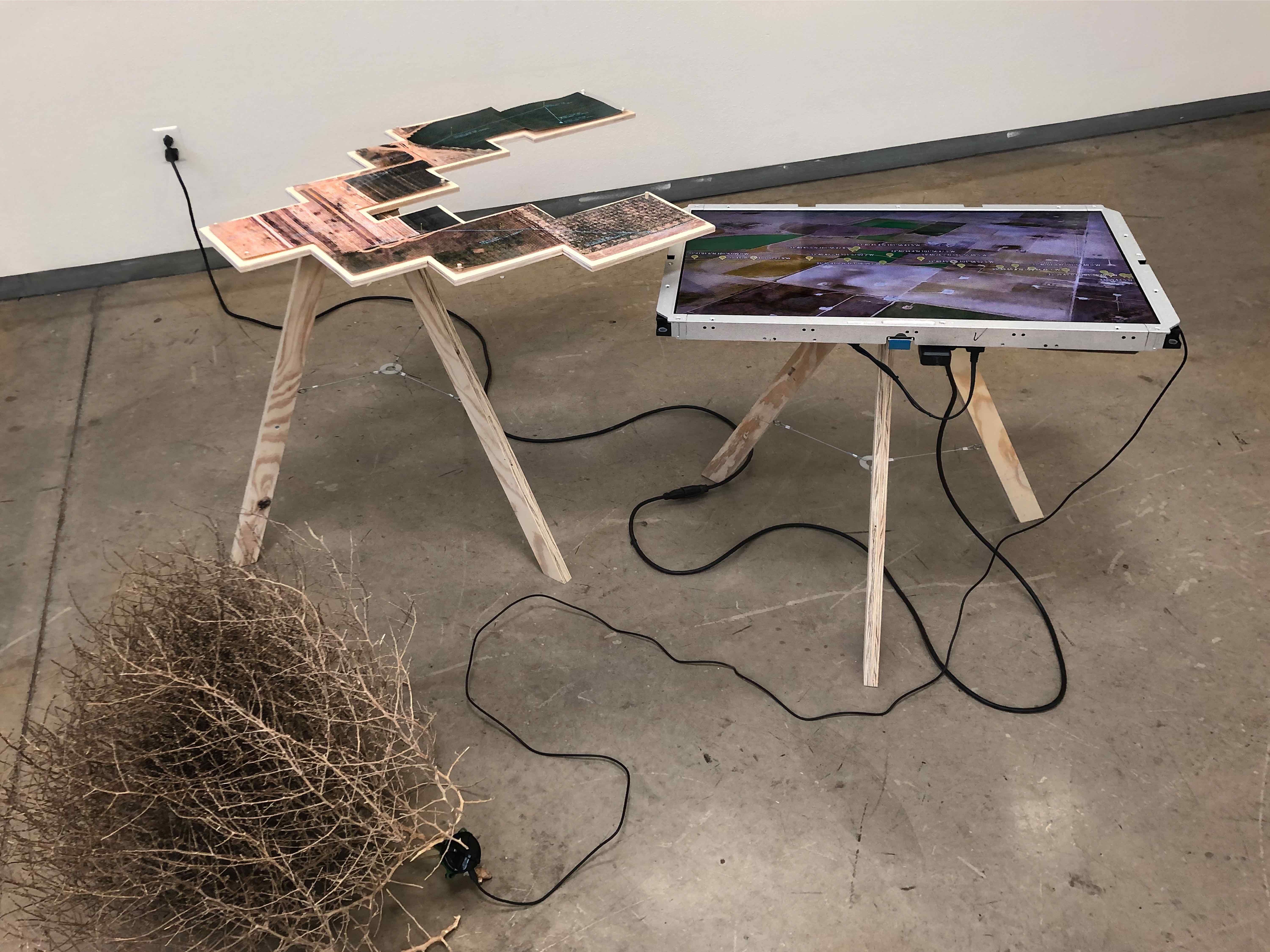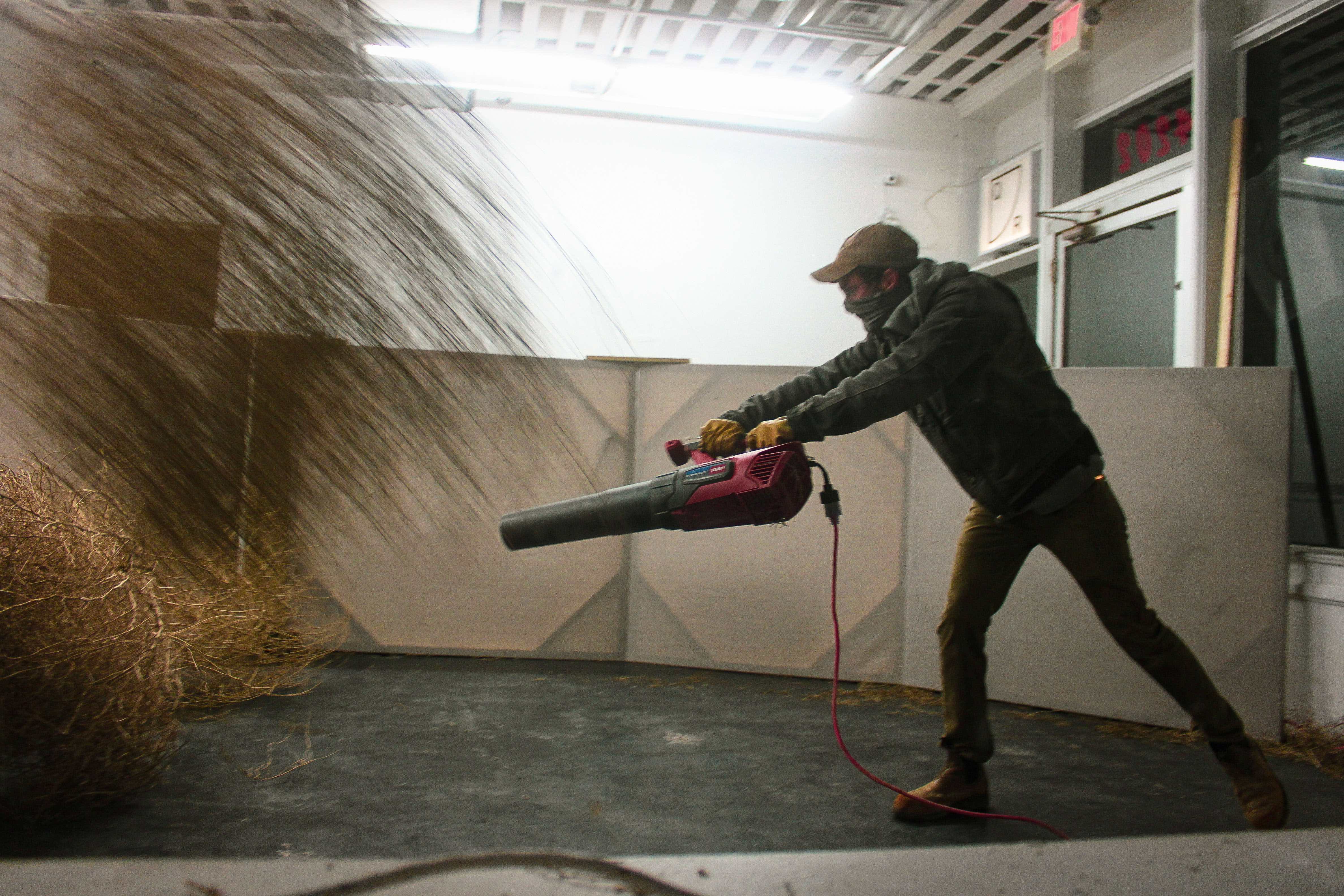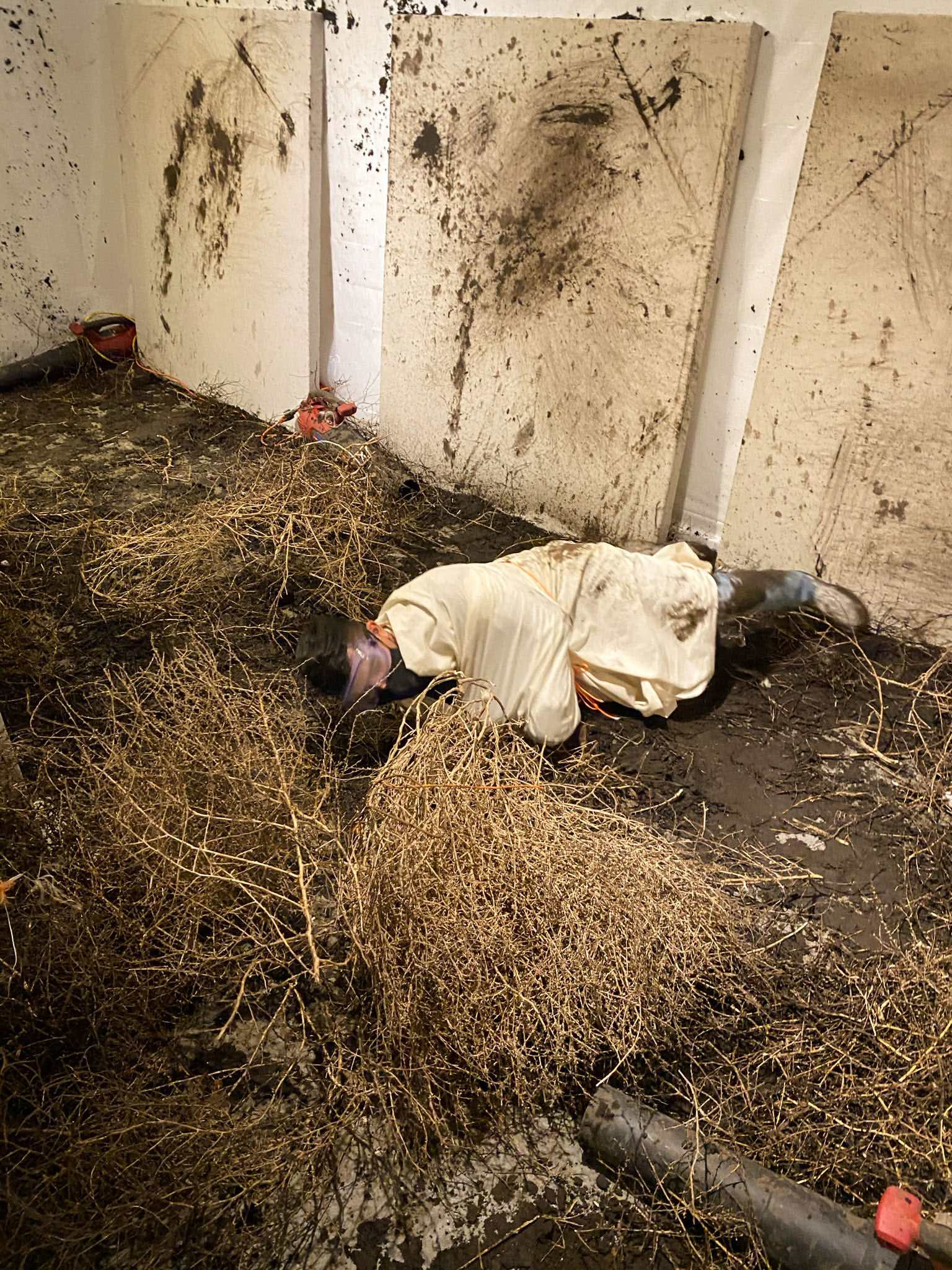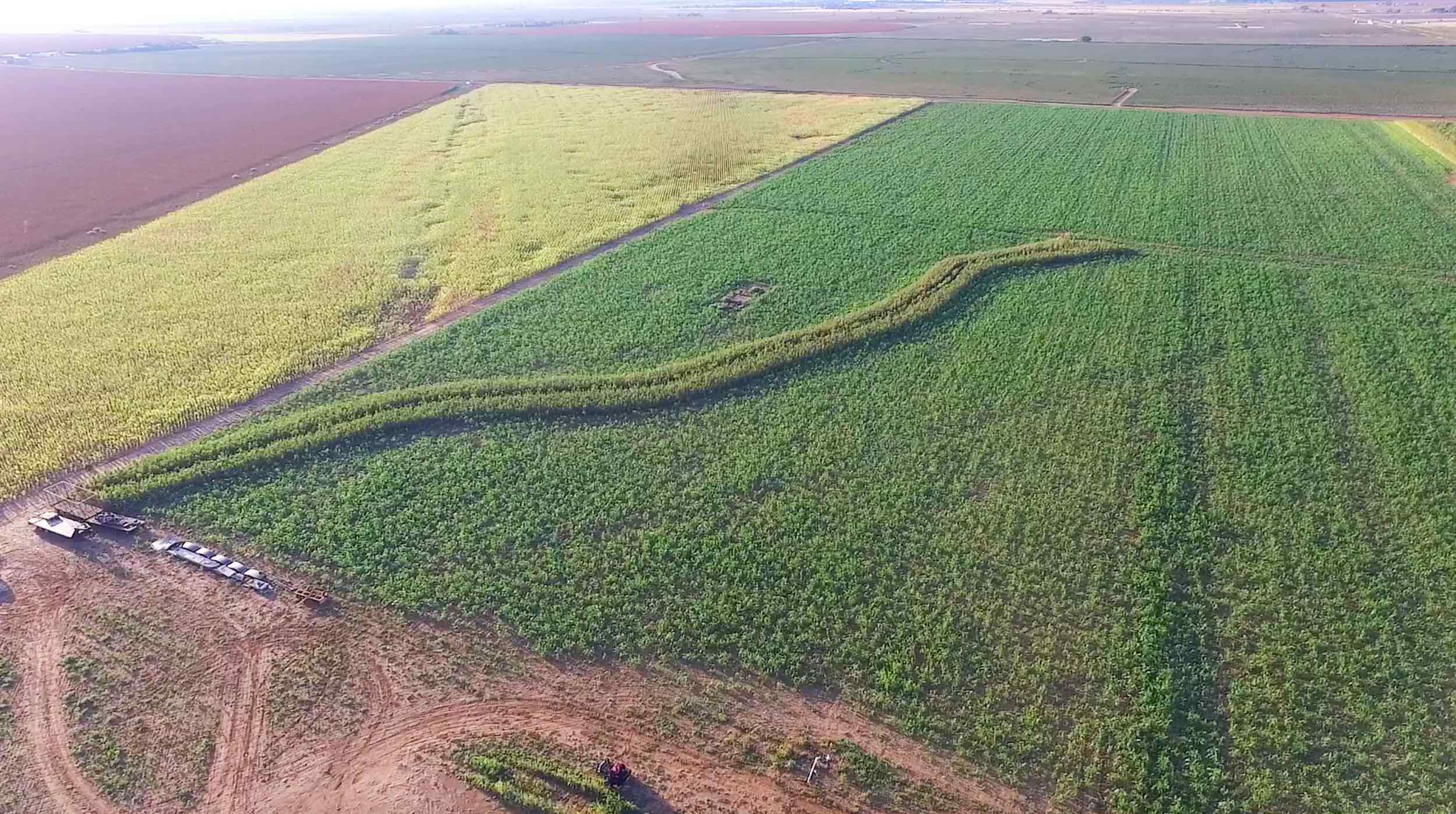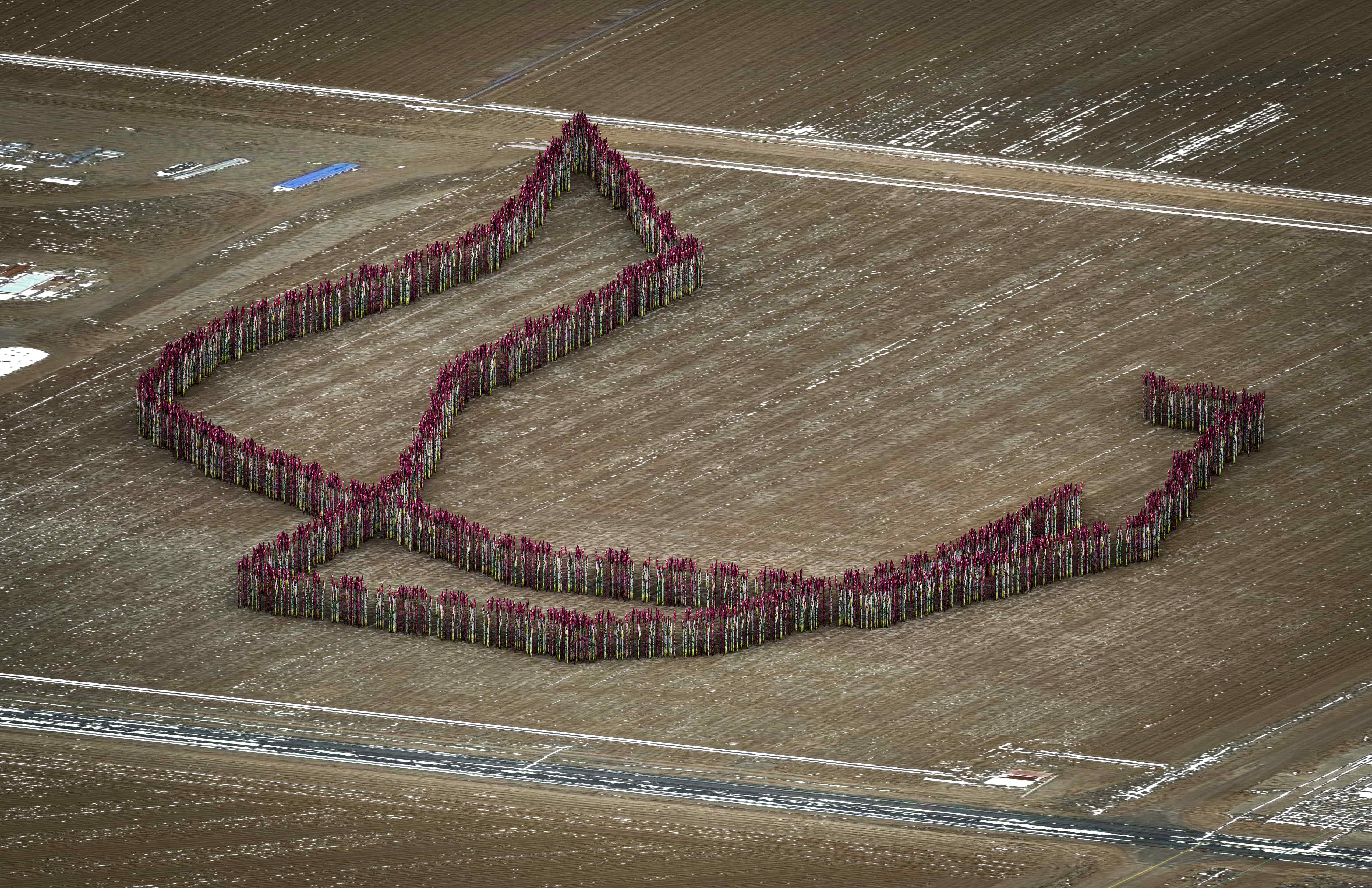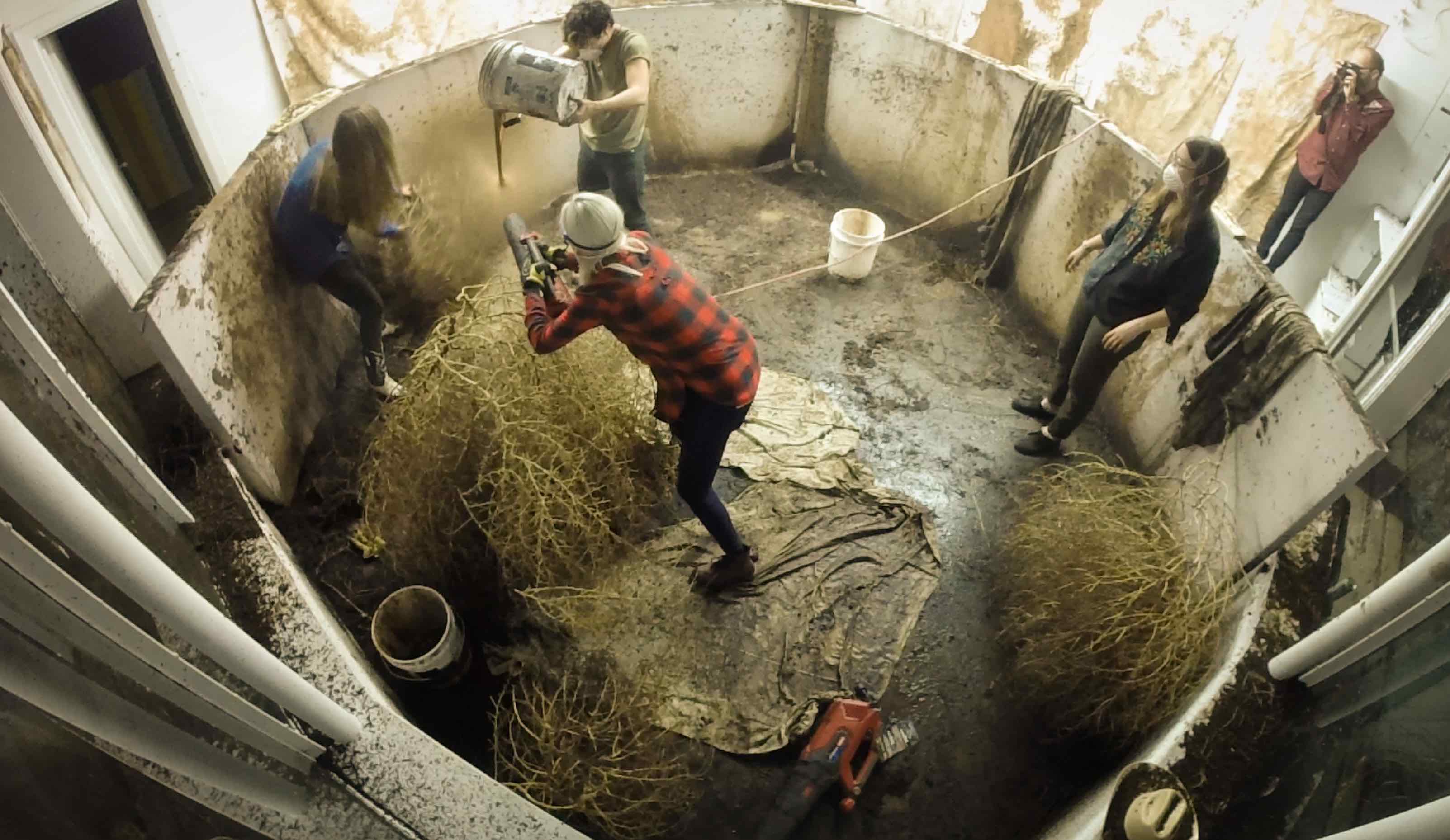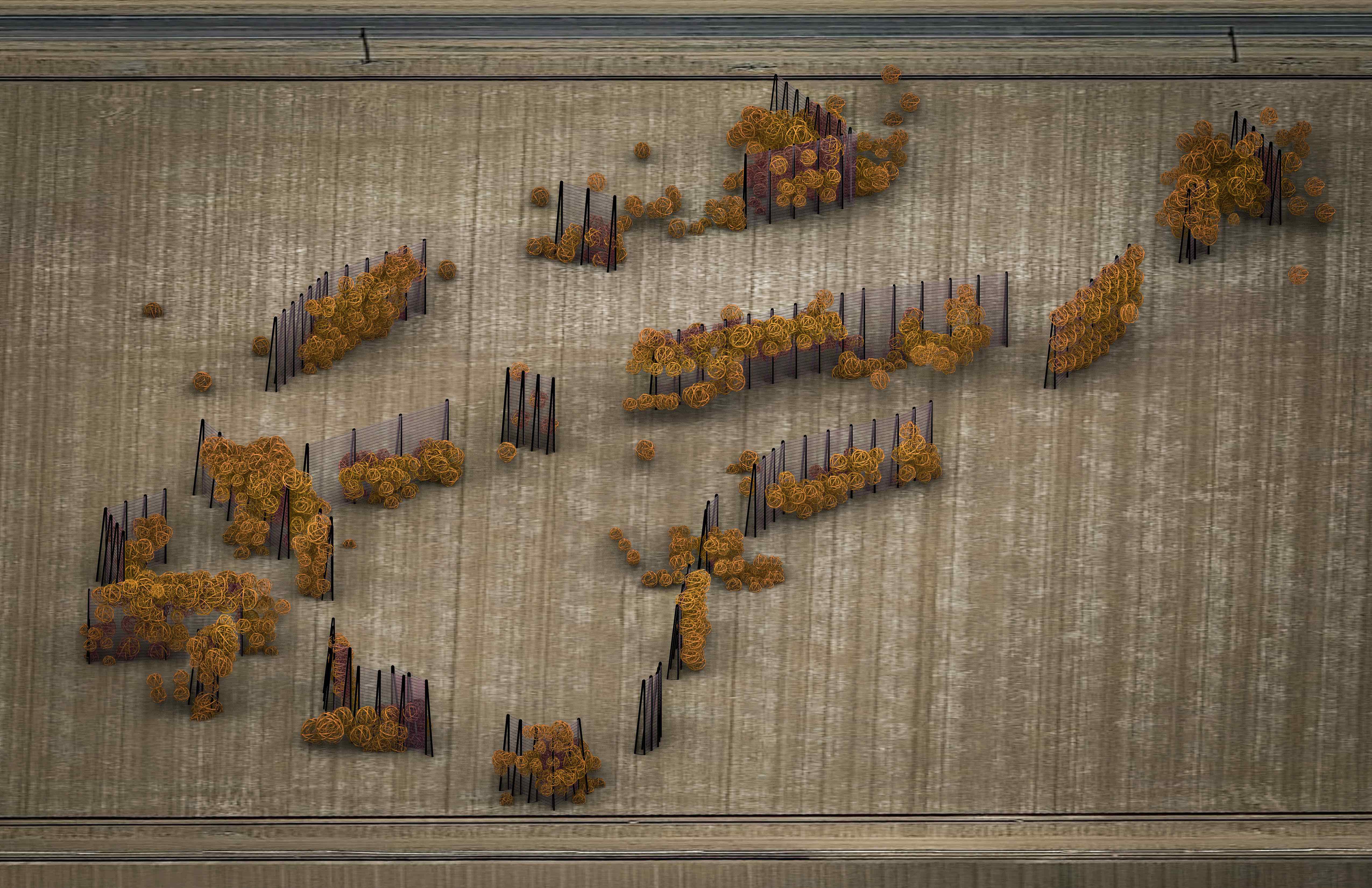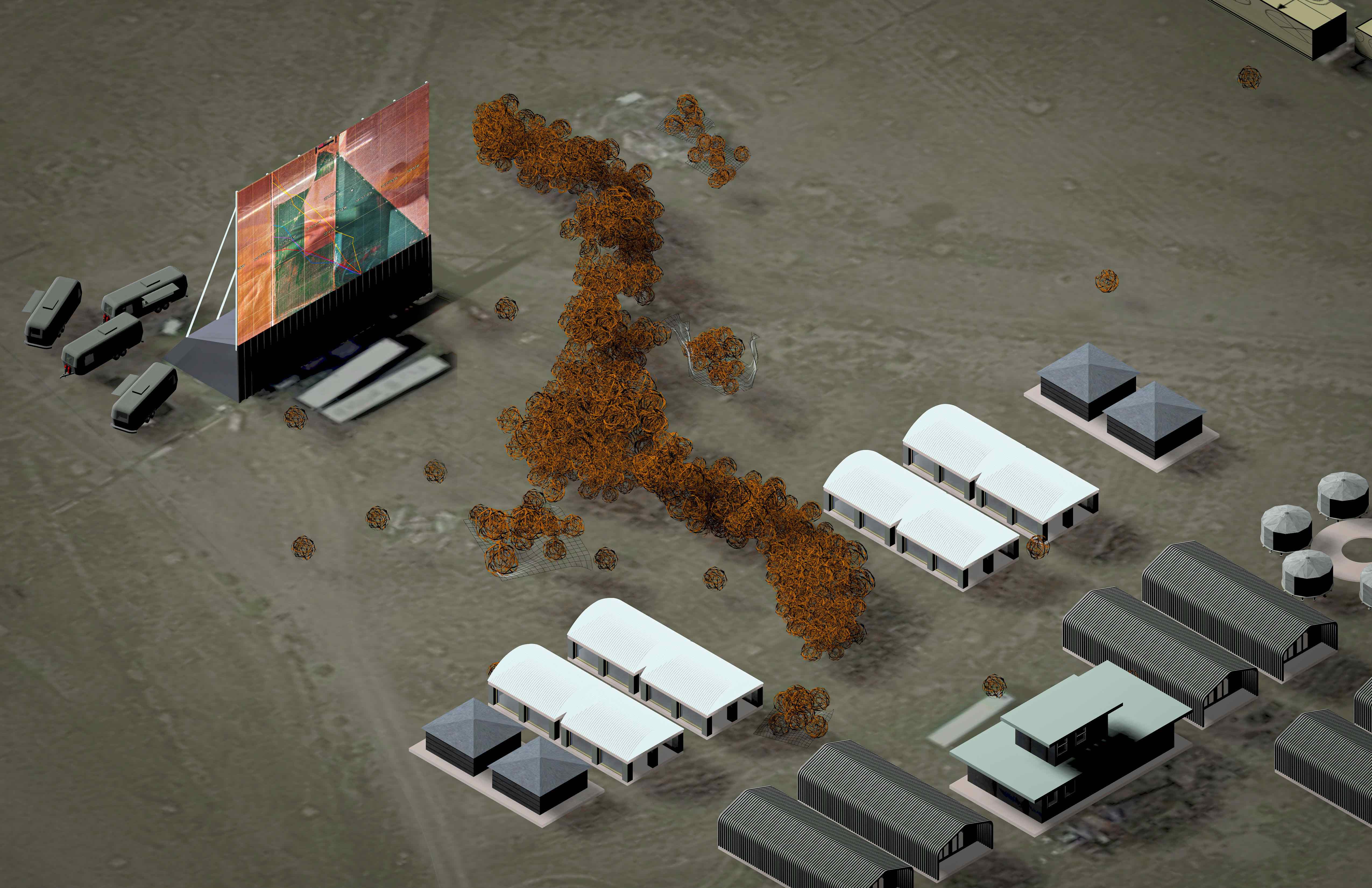TUMBLEWEED RODEO
+ Ongoing design + research
Tumbleweed Rodeo traces the tumbleweed’s provenance in America and its contemptuous relationship with the people and landscapes it has come to represent. It studies the plant’s design, which forces mutualism through its ability to catch, propel, and shelter small lifeforms, and uses this logic to create collaborative performances, pedagogies, and landscape interventions. Every time tumbleweeds have intersected human activity, from agriculture to art and design, they’ve defied their empty categorisation and produced messy situations that incite collective action. The plant is not native to America, has resisted all attempts of eradication and industrialisation, and has been classified as “invasive” in the nation it’s synonymous with.
Tumbleweed migration to America in and of itself is not significant, as colonialism is contingent upon the unencumbered movement of biota across territories. However, the plant’s inability to be tamed, its role in nation-building, and its capacity to upend human life are significant and worthy of critical inquiry. Since they arrived in their host country, tumbleweeds have raised the difficult question of what’s to be done with the no-longer-wanted spoils of empire.
Tumbleweed Rodeo traces the tumbleweed’s provenance in America and its contemptuous relationship with the people and landscapes it has come to represent. It studies the plant’s design, which forces mutualism through its ability to catch, propel, and shelter small lifeforms, and uses this logic to create collaborative performances, pedagogies, and landscape interventions. Every time tumbleweeds have intersected human activity, from agriculture to art and design, they’ve defied their empty categorisation and produced messy situations that incite collective action. The plant is not native to America, has resisted all attempts of eradication and industrialisation, and has been classified as “invasive” in the nation it’s synonymous with.
Tumbleweed migration to America in and of itself is not significant, as colonialism is contingent upon the unencumbered movement of biota across territories. However, the plant’s inability to be tamed, its role in nation-building, and its capacity to upend human life are significant and worthy of critical inquiry. Since they arrived in their host country, tumbleweeds have raised the difficult question of what’s to be done with the no-longer-wanted spoils of empire.
